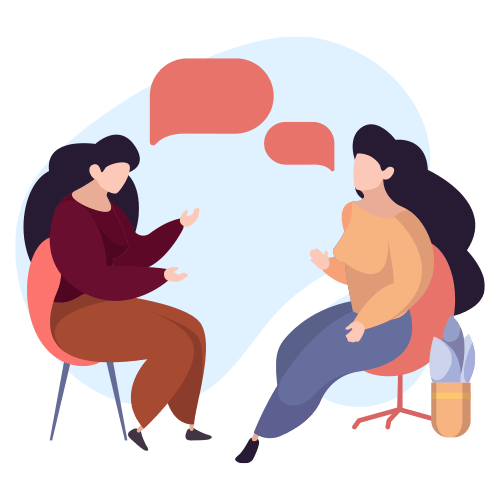Learning Disability Testing & Learning Disability Diagnosis

What is a Learning Disability? I find there is a great deal of confusion about terminology, symptoms, and how to get the help you need. This article was written to help clarify the muck and I hope you find it helpful! In this article I have addressed how learning disabilities are diagnosed across the lifespan. Although many of the people we test for learning disabilities are children or teens, there are also many adults who come to get tested and diagnosed.
Different Areas of Disability
When we are in elementary school, we all learn reading, writing, and math skills that become the foundation of all our future learning. If we struggle to learn these foundational skills it later impacts other subjects such as social studies and science because we depend on these foundational skills for all our learning. Whether in K-12 education or an adult the areas of diagnosis for a Specific Learning Disability are in reading, writing, or mathematics.
Who Can Diagnose a Learning Disability?
Professional clinicians who assess Specific Learning Disabilities (SLD) and dyslexia may have M.A., M.S., M.Ed., Ed.D., or Ph.D. degrees in Education, Reading, Speech Language Pathology, School Psychology, Psychology, or Neuropsychology. Evaluation by a medical doctor is not required for assessment or identification of SLD or dyslexia.
Learning disabilities in the private sector are diagnosed using the Diagnostic Statistical Manual – Fifth Edition (DSM-5). When learning disabilities are diagnosed in K-12 education they are diagnosed using criteria set forth by IDEIA, which stands for the federal law revised in 2004 to be called the Individuals with Disabilities Education Improvement Act of 2004. Both the DSM-5 and IDEIA use the term Specific Learning Disability to designate a diagnosis. Each is discussed separately below:
DSM-V Diagnostic Criteria
According to the DSM-V, the areas people can get diagnosed with a Specific Learning Disability are as follows:
Specific Learning Disability with impairment in reading:
Word Reading Accuracy
Reading range or fluency
Reading Comprehension
Dyslexia is an alternative term used to refer to a pattern of learning difficulties characterized by problems with accurate or fluent word recognition, poor decoding, and poor spelling abilities. If dyslexia is used to specify this particular pattern of difficulties, it is important also to speficy any additional difficulties that are present, such as difficulties with reading comprehension or math reasoning.
Specific Learning Disability with impairment in written expression:
Spelling accuracy
Grammar and punctuation accuracy
Clarity or organization of written expression
Specific Learning Disability with impairment in mathematics:
Number sense
Grammar and punctuation accuracy
Accurate or fluent calculation
Accurate math reasoning
Dyscalculia is an alternative term used to refer to a pattern of difficulties characterized by problems processing numerical information, learning arithmetic facts, and performing accurate or fluent calculations. If dyscalculia is sued the specify this particular pattern of mathematic difficulties, it is important also to specify any additional difficulties that are present, such as difficulties with math reasoning or word reasoning accuracy.
When people come to get tested privately, they are diagnosed using the DSM-IV. It is important when deciding where to get Learning Disability Testing completed that you make sure you are getting tested by a qualified provider and that the provider is administering reputable assessments. Once a diagnosis is made, people can take the report to their school to so they can work with school staff to get appropriate accommodations. As long as testing is completed by a qualified evaluator and the person uses appropriate testing materials k-12 schools, colleges, and testing board take the evaluation into consideration.
For those of you who have a child in K-12 education, the following information was obtained from the Colorado Department of Education’s website.
Colorado Department of Education Definition:
Definition: Specific Learning Disability means a disorder in one or more of the basic psychological processes involved in understanding or in using language, spoken or written, that may manifest itself in the imperfect ability to listen, think, speak, read, write, spell or do mathematical calculations, including conditions such as perceptual disabilities, brain injury, minimal brain dysfunction, dyslexia, and developmental aphasia. Specific learning disability does not include learning problems that are primarily the result of: visual, hearing, or motor disabilities; intellectual disability; serious emotional disability; cultural factors; environmental or economic disadvantage; or limited English proficiency.
There are currently 8 Academic Domains of Specific Learning Disabilities, including:
Oral Expression
Listening Comprehension
Written Expression
Basic Reading Skills
Reading Fluency Skills
Reading Comprehension
Mathematical Calculation
Mathematical Problem Solving
In order to determine whether a child has a Specific Learning Disability, there are certain criteria that need to be met.
- Development of a body of evidence that demonstrates the two key criteria related to academic skill deficits and lack of response to scientific, research-based intervention in one or more of the 8 areas of SLD are met.
- Determination that the learning problems are not primarily due to the specified “exclusionary factors.”
- Determination that the findings are not due to lack of appropriate instruction in reading or math.
- Determination that a student has a Specific Learning Disability.
- Determination that a student cannot receive reasonable educational benefit from general education alone.
Data to determine whether a child has a Specific Learning Disability are primarily gathered from three sources:
- Curriculum Based Measurement: All students in the primary grades in public schools are giving benchmark tests including the NWEA (Northwest Evaluation Association) which provide MAP scores (Measures of Academic Progress) two to three times per year. Student performance is then tracked using these measures.
- Criterion Reference Measures: These tests are most often based on curriculum or text materials. For example, maybe your student consistently scores at the 40th percentile on reading comprehension tests where the grade level expectation is 80% or better as indicated in the curriculum and/or text materials.
- Norm-referenced, diagnostic assessments: If a student scores at or below the 12th percentile [such as the WJ-IV, CTOPP, Test of Written Language-3; Gray Oral Reading Test – Fifth Edition (GORT-5); KeyMath3, etc.]
In order to be diagnosed with a Specific Learning Disability in the public education system a child also has to meet certain “exclusionary factors”, meaning the learning difficulty cannot be attributed to:
Visual impairment , including blindness
Hearing impairment, including deafness
Orthopedic impairment
Intellectual Disability
Serious Emotional Disability
Cultural Factors
Environmental or Economic Disadvantage
Limited English Proficiency
Finally, if it is determined that the child has a Specific Learning Disability, is it determined that The student cannot receive reasonable educational benefit from general education alone?
If the above criteria are met then the child or teen may begin to receive special education services and an Individualized Education Plan (IEP) is developed. Each IEP is developed with the child’s parents and teacher and is individualized for the child. At least once a year, the child’s special education team meets to review and revise the plan. Once every three years testing is completed to determine whether or not the child/teen continues to meet qualification criteria for services.
Italicized part of this section are quotes from the Colorado Department of Education website.
How to Determine Whether you or your child has a Learning Disability
When determining whether someone has a learning disability, it is important to complete thorough testing. I have listed below some of the tests that may be given, depending on age and areas of concern:
Interview: To gain background information, pregnancy, birth, developmental milestones, areas of strength, areas of struggle, look for any other co-existing difficulties we may so we can get a full understand of what to recommend to you going forward (i.e., anxiety, struggles with focus, etc.).
WPPSI-IV, WISC-V, WAIS-IV: Looks at ability to learn new information visually, verbally, working memory, and processing speed.
Woodcock Johnson-IV: Testing the looks at the client’s reading, writing, and math skills. Depending on our findings we may also recommend extended memory testing or more in-depth testing on specific reading skills (i.e., fluency, decoding).
Extra testing: Depending needs and age, your psychologist may recommend one or both of the following tests in addition to the tests described above:
Key Math: Targeted math assessment lasting 3-90 minutes.
The Gray Oral Reading Tests-Fifth Edition (GORT-5): The GORT-5 is one of the most widely used measures of oral reading fluency and comprehension and will allow us to gain a deeper understanding of reading fluency and comprehension levels.
The Comprehensive Test of Phonological Processing – Second Edition (CTOPP-2): The CTOPP-2 is a targeted assessment of phonological skills.
Next Steps
If you think you or your child has a Learning Disability, please give us a call at 720-583-9332! If you want to learn more click here: Learning Disability Testing at MVP. You can also check out our other blogs about specific areas of disability or our main page which discusses what you can expect from testing at Mountain Vista Psychology! We hope this article has been helpful and look forward to serving you!
We complete testing for all of the Denver Metro area and beyond, including Englewood, Parker, Lone Tree, Castle Rock, Greenwood Village, Aurora, Littleton, Centennial.
Written by Dr. Steffanie Stecker
Schedule a FREE Consultation
We believe in an integrative and holistic approach to help you make the changes you want. Contact us now to schedule an appointment or to request a 20 minute free phone consultation. During this session, you will be invited to share your story and ask any questions you may have.
Recent Articles
Identifying Different Parenting Styles
Much like everything in life, there are differences in the way people parent their children. People often want to know…
Signs Someone You Love May Be Hiding Depression
Depression can be scary for many people. Depression can make individuals feel as though they are losing control over their…
Fighting the Good Fight with Couples Therapy
Tension and conflict are normal and even healthy parts of any relationship. Sometimes, tension and conflict work out by itself.…
What Is Family Therapy?
In any family, it is normal to have a certain level of conflict. In fact, conflict might even be healthy…





